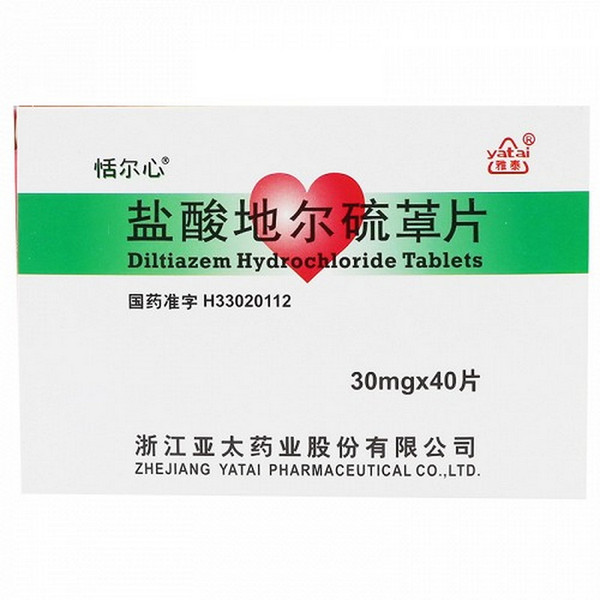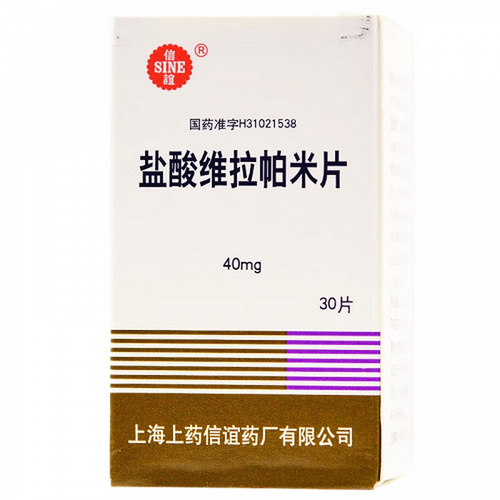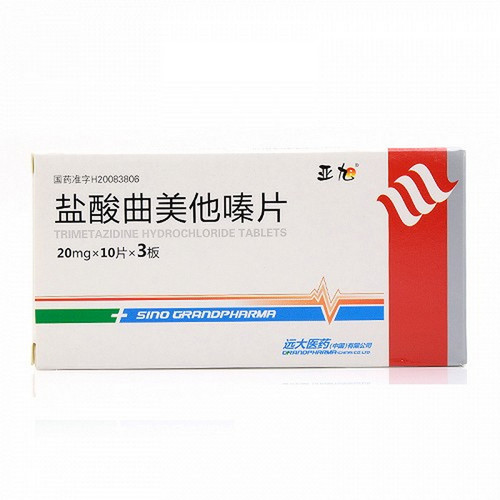Product Overview
[Drug Name]
Generic Name: Diltiazem Hydrochloride Tablets
Trade Name: Tianerxin Diltiazem Hydrochloride Tablets 30mg x 20 tablets x 2 boxes
[Main Ingredient]
Diltiazem Hydrochloride.
[Properties]
This product is white tablets.
[Indications/Main Functions]
1. Angina pectoris;
2. Mild to moderate hypertension.
[Specifications]
30mg x 40 tablets
[Dosage and Administration]
Oral administration: 1-2 tablets 3-4 times daily, before meals or at bedtime. Increase the dose every 1-2 days. If the dose needs to be increased, do not exceed 360mg per day, but only under the guidance of a physician.
[Adverse Reactions]
1. Swelling, headache, nausea, dizziness, rash, and weakness may occur. 2. The following conditions may rarely occur (incidence less than 1.0%): atrioventricular block, bradycardia, bundle branch block, congestive heart failure, abnormal electrocardiogram (ECG), hypotension, palpitations, syncope, tachycardia, ventricular premature beats, excessive dreaming, amnesia, depression, abnormal gait, hallucinations, insomnia, nervousness, noisy sleep, tremor, anorexia, constipation, diarrhea, dysgeusia, dyspepsia, thirst, vomiting, mild abnormal liver function, petechiae, photosensitivity, pruritus, urticaria, erythema multiforme, exfoliative dermatitis, amblyopia, elevated creatine phosphokinase, dyspnea, epistaxis, hyperglycemia, hyperuricemia, impotence, muscle cramps, polyuria, tinnitus, osteoarthritis, alopecia, extrapyramidal syndrome, gingival hyperplasia, hemolytic anemia, prolonged bleeding time, leukopenia, purpura, retinopathy, and thrombocytopenia.
[Contraindications]
1. Patients with sick sinus syndrome who do not have a pacemaker installed.
2. Patients with first- or second-degree atrioventricular block who do not have a pacemaker installed.
3. Patients with systolic blood pressure below 12 kPa (90 mmHg) and heart rate below 50 beats/min.
4. Patients allergic to this product.
5. Patients with congestive heart failure.
[Drug Interactions]
This product is biotransformed in vivo via cytochrome P450 oxidase. Coadministration with other drugs that undergo biotransformation via the same pathway may result in competitive inhibition of metabolism. Therefore, when coadministration of this product is initiated or discontinued, the dosage of drugs involved in the same metabolic pathway must be adjusted to maintain appropriate blood drug concentrations.
[Precautions]
1. This product may prolong the refractory period of the atrioventricular node, but does not significantly prolong sinus node recovery time, except in patients with sick sinus syndrome. In rare cases, this effect may abnormally slow the heart rate (particularly in patients with sick sinus syndrome) or cause first- or third-degree atrioventricular block. 2. This drug has a negative inotropic effect; patients with impaired ventricular function should use it with caution.
3. This drug may occasionally cause symptomatic hypotension.
4. This drug may rarely cause acute liver damage, manifested by significant elevations in serum alkaline phosphatase, lactate dehydrogenase, aspartate aminotransferase, and alanine aminotransferase, as well as other signs of acute liver damage. This condition may resolve with discontinuation of the drug.
5. This drug is metabolized in the liver and excreted by the kidneys and bile. Long-term use requires regular monitoring of liver and kidney function. Patients with impaired liver and kidney function should use this drug with caution.
6. Reactions are often transient and may resolve with continued use in some patients. If skin reactions persist, discontinue the drug. Alternatively, follow a physician's advice.
[Pediatric Use]
This study has not been conducted and no reliable references are available.
[Elderly Use]
It is recommended that elderly patients start with a low dose.
[Overdose]
Overdose can cause bradycardia, hypotension, heart block, and heart failure. While the drug is being cleared from the gastrointestinal tract, the following treatments can be administered based on its pharmacological effects and clinical experience:
1. Bradycardia: Administer atropine 0.6-1 mg. If ineffective, use isoproterenol with caution.
2. High-degree atrioventricular block: Treat as above. If persistent high-degree atrioventricular block occurs, administer a pacemaker.
3. Heart failure: Administer inotropic drugs (isoproterenol, dopamine, dobutamine) and diuretics.
4. Hypotension: Administer pressors (such as dopamine or norepinephrine).
[Pharmacology and Toxicology]
This drug is a calcium channel blocker. It acts on calcium channels in the myocardium, coronary arteries, peripheral vascular smooth muscle, and the atrioventricular node, inhibiting transcellular calcium influx, reducing intracellular calcium concentration without altering serum calcium concentration. It can relieve and prevent the contraction of myocardial and vascular smooth muscle cells, dilate coronary arteries and peripheral blood vessels, improve myocardial hypertrophy and prolong atrial node conduction time, and can effectively treat hypertension, angina pectoris and arrhythmias.









